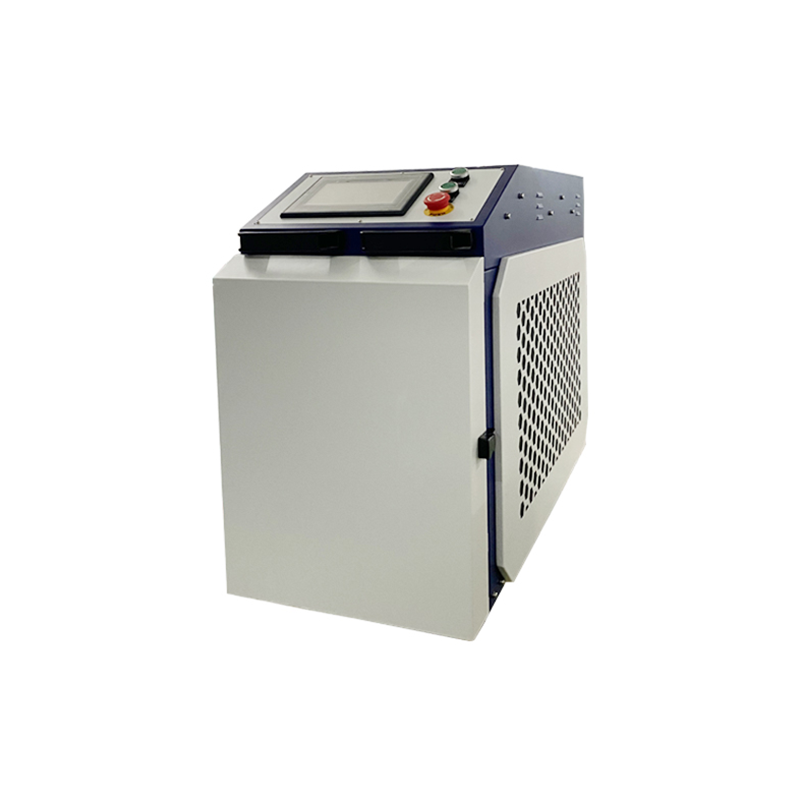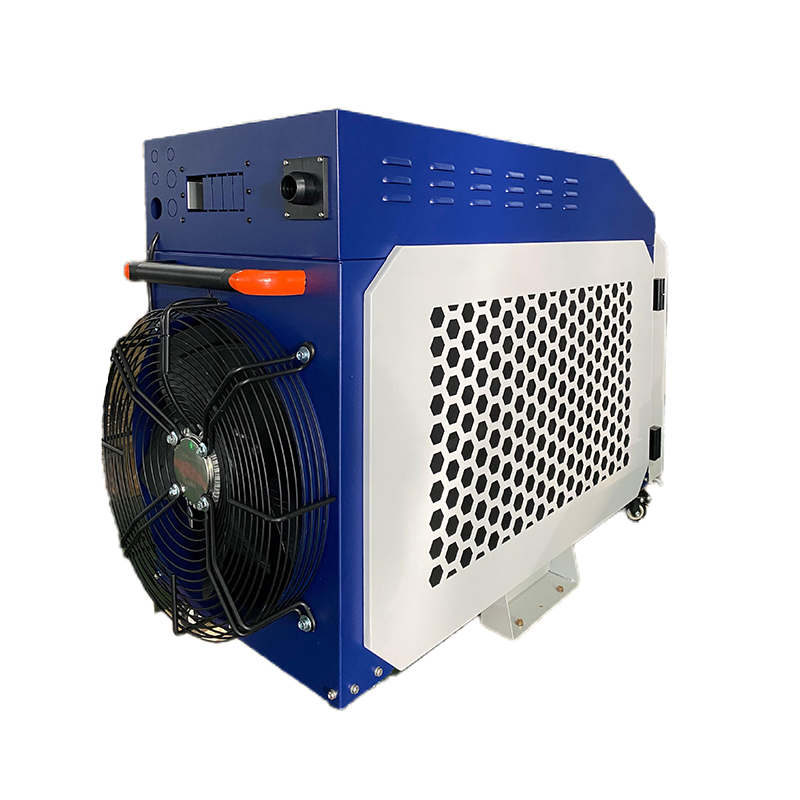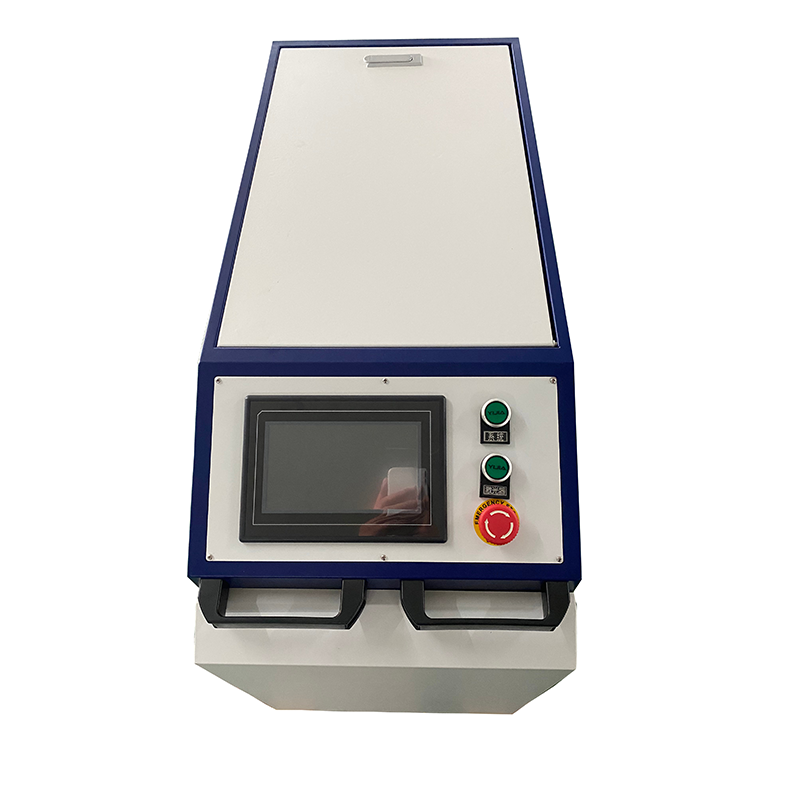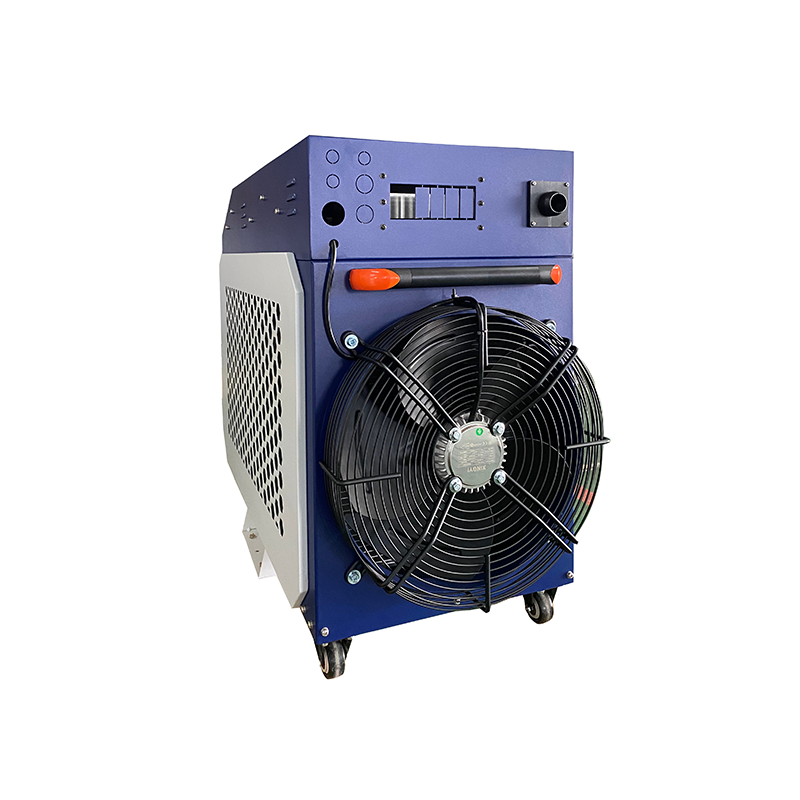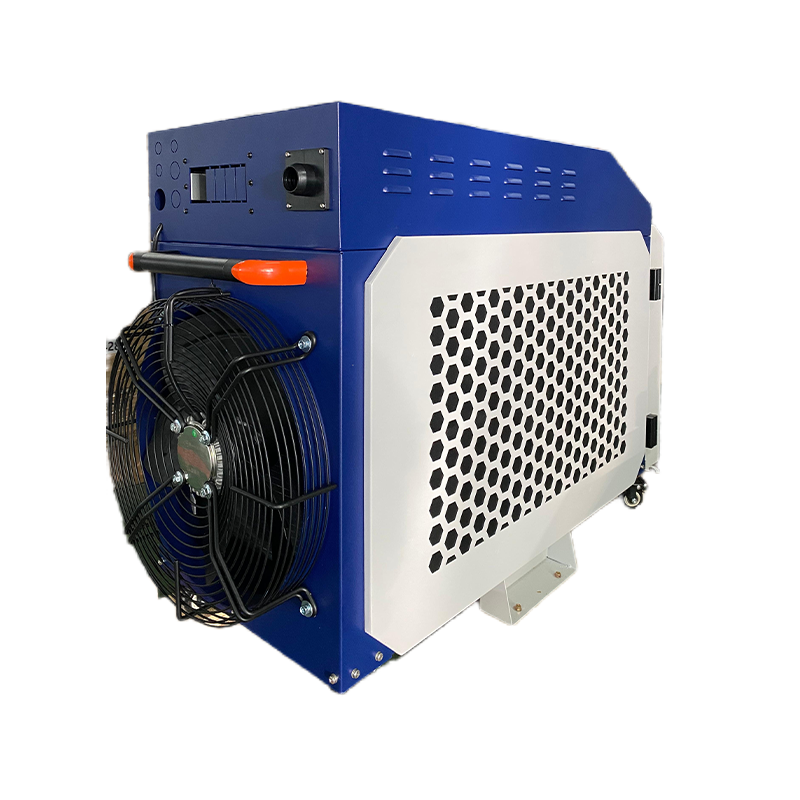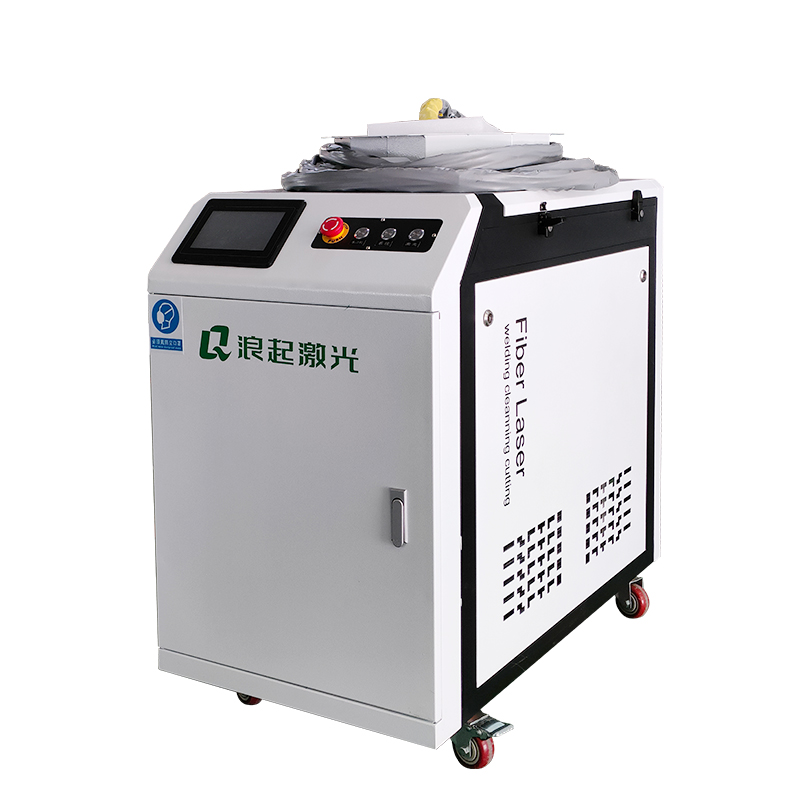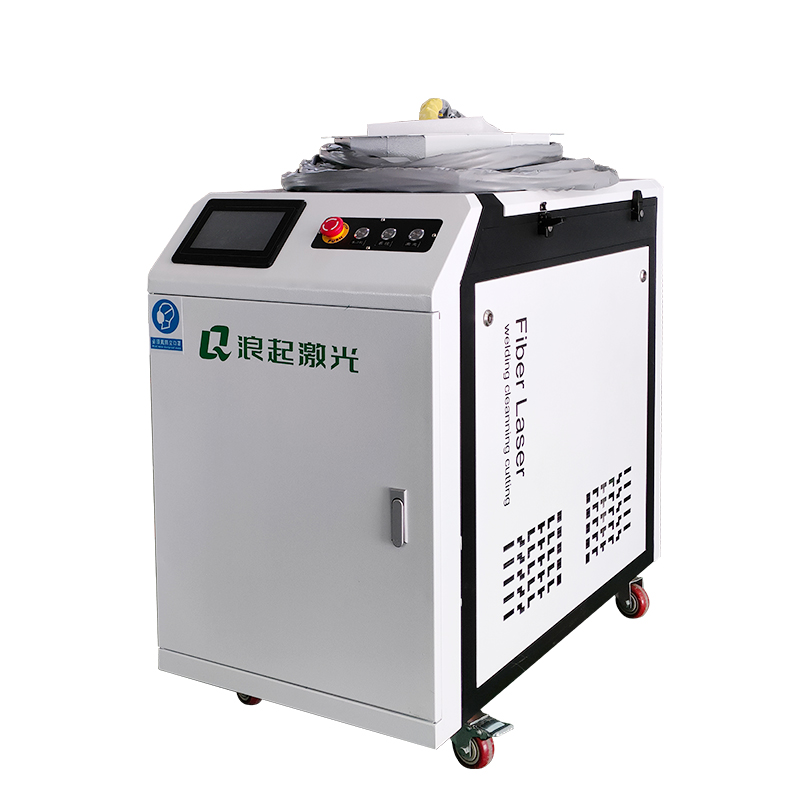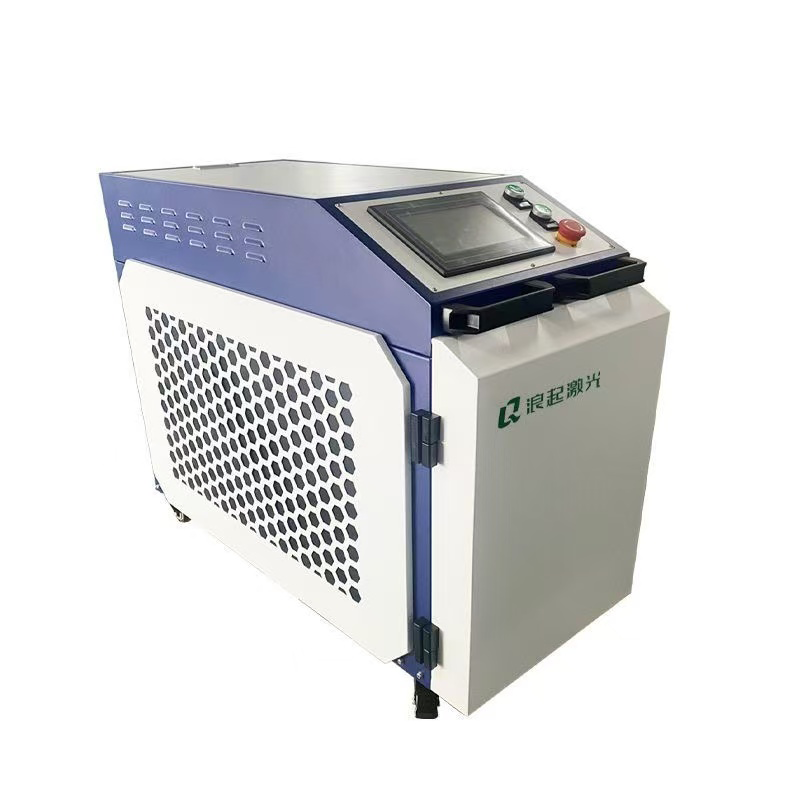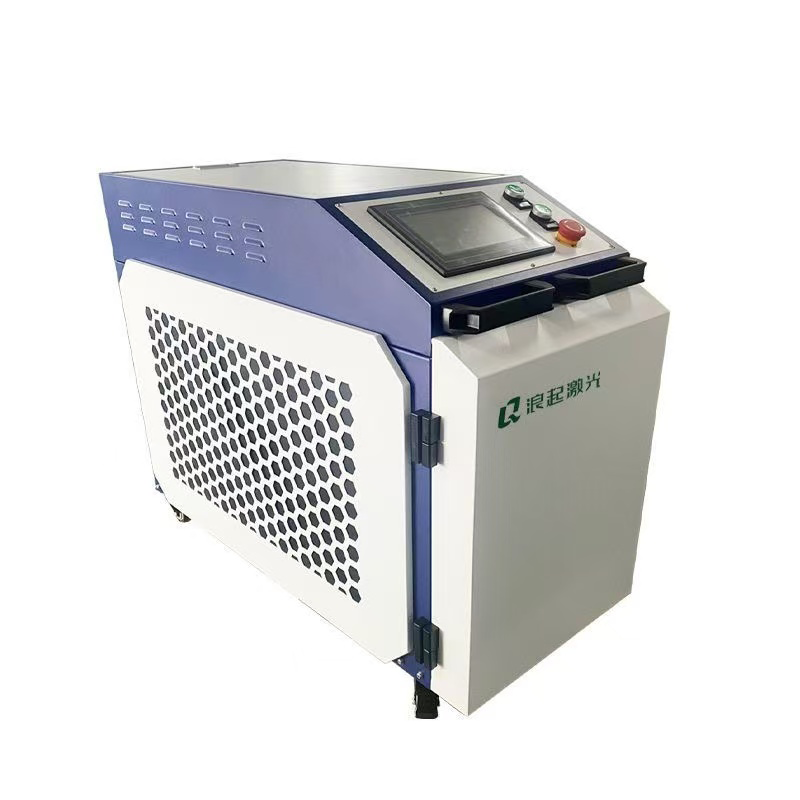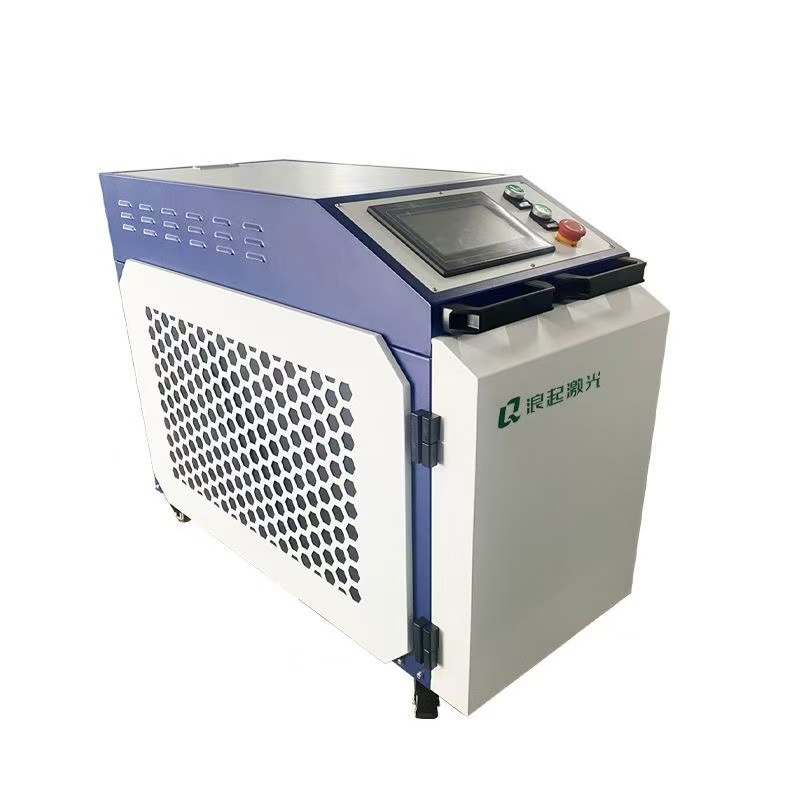Of course. This is an excellent question, as the laser source is the heart of the machine and the single most important factor determining its performance, cost, and suitability for the task.
For small fiber laser rust removal machines, the choice is almost exclusively a Pulsed Fiber Laser. However, there are critical sub-choices within that category, primarily between MOPA and Non-MOPA (Q-Switched) fiber lasers.
Here’s a detailed breakdown of the laser source choice.
The Overwhelming Winner: Pulsed Fiber Lasers
Continuous wave (CW) lasers are unsuitable for cleaning because they deliver constant energy, which leads to excessive heat buildup, melting the base material. Pulsed lasers deliver energy in extremely short, high-peak-power bursts. This is the key mechanism for effective cleaning:
Instantaneous Ablation: The high-intensity pulse causes the rust (contaminant) to instantly vaporize or turn into plasma.
Minimal Heat Affection (HAZ): The pulse is so short that the heat doesn't have time to conduct into the underlying metal.
The Two Main Contenders: MOPA vs. Non-MOPA (Q-Switched)
This is the central decision you'll face. Both are pulsed fiber lasers, but their internal design differs, giving the MOPA laser a significant advantage for rust removal.
| Feature | MOPA Fiber Laser | Standard Q-Switched Fiber Laser |
|---|---|---|
| Pulse Width | Adjustable (typically ~20ns to 500ns). This is its key advantage. | Fixed (typically ~100-150ns). Cannot be changed. |
| Flexibility | Very High. Can optimize parameters for a wide range of materials and contaminants. | Low. Limited to its fixed parameters. |
| Rust Removal Effectiveness | Excellent. Shorter pulse widths (<100ns) are highly effective at removing rust with minimal substrate damage. | Good. It works, but it's a "one-size-fits-all" approach. It can be less efficient and riskier on delicate surfaces. |
| Versatility | High. Can also be used for precision marking, engraving, and cleaning other materials like paint, anodization, etc. | Limited. Primarily designed for marking and basic cleaning. |
| Cost | Higher (but the price gap has narrowed significantly). | Lower |
| Best For | Professional, versatile machines where quality, control, and safety are paramount. The recommended choice. | Budget-conscious applications where the primary target is thick rust on robust, non-critical parts. |
Why MOPA is the Superior Choice for Rust Removal
The adjustable pulse width of a MOPA laser is a game-changer for cleaning applications. Here’s why:
Superior Control for Delicate Surfaces: Rust often needs to be removed from valuable or precision components (e.g., antique tools, car parts, precision machinery). A shorter pulse width (e.g., 30ns) provides a more "aggressive" shockwave effect, ablating the rust without transferring significant heat to the base metal. This prevents burning, melting, or changing the metallurgical properties of the substrate.
Adaptability to Different Rust Conditions: Rust isn't uniform.
Light Surface Rust: A shorter pulse width and higher frequency can quickly and gently clean the surface.
Thick, Layered Rust: A longer pulse width (e.g., 200ns) provides more of a "thermal peeling" effect, which can be more efficient for breaking up thicker layers.
Enhanced Safety Margin: The ability to fine-tune the pulse width gives the operator a much larger window of parameters that effectively remove rust without damaging the parent material. This makes the process more forgiving and safer for the workpiece.
Other Key Laser Parameters to Consider
Beyond the MOPA vs. Q-Switched decision, you must also specify these parameters:
Average Power (W): For a "small" machine, this typically ranges from 50W to 200W.
50W-100W: Ideal for fine, precise work on small areas (e.g., restoring antiques, cleaning welds).
100W-200W: Provides faster cleaning speeds and is better suited for larger surface areas or heavier rust. This is the most common range for general-purpose industrial small machines.
Pulse Energy (mJ): This determines the "impact force" of each laser pulse. Higher pulse energy is better for removing thick, stubborn contaminants. Ensure the laser has sufficient pulse energy for your intended rust thickness.
Pulse Repetition Rate (Frequency in kHz): The number of pulses per second. Higher frequencies allow for faster scanning speeds but at a reduced pulse energy. The ability to adjust the frequency is crucial for finding the right balance between speed and cleaning strength.
Summary and Recommendation
| Scenario | Recommended Laser Source | Rationale |
|---|---|---|
| General-Purpose / Professional Use | 100W-200W MOPA Pulsed Fiber Laser | Offers the best balance of speed, control, and safety. The flexibility justifies the slightly higher cost. |
| High-Precision / Delicate Restoration | 50W-100W MOPA Pulsed Fiber Laser | Lower power allows for finer control, and the adjustable pulse width is essential for protecting valuable substrates. |
| Tight Budget / Heavy Rust on Robust Parts | 100W Q-Switched Pulsed Fiber Laser | A cost-effective solution if the primary goal is removing thick rust from surfaces where minor cosmetic damage is acceptable. |
Conclusion:
For any serious small fiber laser rust removal machine, a MOPA-configuration pulsed fiber laser is the unequivocal best choice. Its critical feature—adjustable pulse width—provides the necessary control to effectively remove rust while preserving the underlying material, which is the entire point of laser cleaning. While the initial investment is higher than a Q-Switched laser, the versatility, quality, and safety it provides make it the smarter and more future-proof investment.

